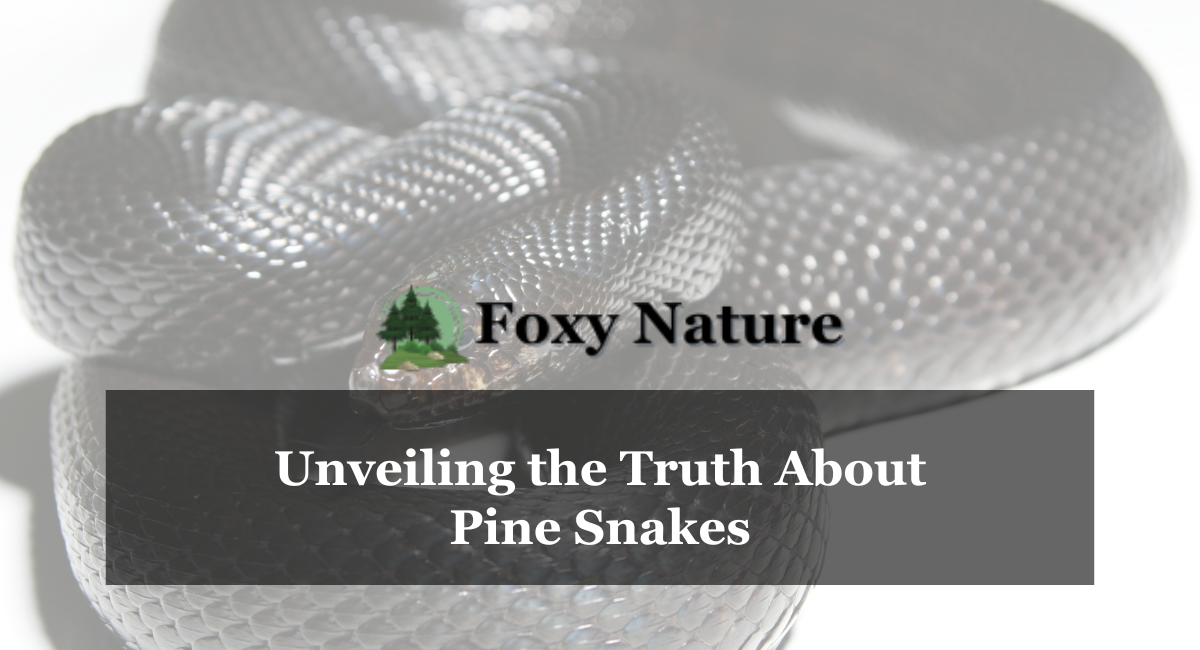The enigmatic world of snakes often evokes fear and curiosity, and the pine snake is no exception.
Often mistaken for venomous, these fascinating creatures spark a multitude of questions, particularly regarding their safety and behavior.
This article delves into the truth surrounding pine snakes, separating fact from fiction and providing insights into their unique characteristics.
Habitat and Range: Where the Pine Snake Thrives
Before delving into their venom status, understanding the pine snake’s natural habitat paints a clearer picture of its ecological role.
These impressive reptiles primarily inhabit elevations above 9,000 feet (2,700 meters), preferring mountainous regions, tropical pine forests, open fields, shrublands, barren landscapes, and hilly areas.
Their scattered populations extend beyond their namesake Pine Barrens region in South New Jersey, encompassing parts of Tennessee, Virginia, and North Georgia.
The Non-Venomous Truth: Debunking the Myth
The answer to the most commonly asked question about pine snakes is a resounding no. Pine snakes (Pituophis melanoleucus) are not venomous, meaning they lack the specialized glands and fangs required to inject venom into their prey or predators.
Despite their imposing size, their bites, while painful and potentially bloody, pose no threat to humans or animals.
The scientific name, Pituophis melanoleucus, itself paints a picture of this snake’s distinctive appearance. “Melano” translates to “black” and “leucos” to “white,” reflecting their striking black and white body patterns.
While harmless, pine snakes, like most wild animals, bite defensively when provoked or threatened. Their vocal cords allow them to produce a harsh, rasping hiss by expanding their lips and exhaling forcefully. This hissing sound serves as a warning to potential threats.
Beyond the Bite: Considering the Pine Snake as a Pet
While their beauty and relatively easy care requirements might make them seem like ideal pets, it’s important to acknowledge that owning a pine snake isn’t for everyone.
These large snakes have a voracious appetite and require ample space to roam. Additionally, their temperament can be unpredictable, and they may exhibit defensive behavior when handled.
Exploring the Diversity: Recognizing Pine Snake Subspecies
Pine snakes, although classified under one species, exhibit variations across their geographic range. Here’s a closer look at some common subspecies:
- Black Pine Snake: This large, non-venomous snake ranges from dark brown to black in color. Despite their non-threatening nature, they can inflict a painful bite and may strike defensively. They are opportunistic feeders, consuming birds and their eggs, rodents, small mammals, and mice. Juveniles may also include lizards and insects in their diet.
- Northern Pine Snake: These non-venomous snakes are known for their sharp snouts, allowing them to burrow into pocket gopher holes in search of prey. They are considered one of the rarest reptiles in North America.
- Florida Pine Snake: Similar to their counterparts, Florida pine snakes are not poisonous and pose no threat to humans or animals. They may bite defensively, but their bite is not venomous.
Frequently Asked Questions: Addressing Common Concerns
- Do Florida Pine Snakes Bite?
While non-venomous, Eastern Pine Snakes, including the Florida subspecies, will bite defensively if they feel threatened or cornered. This behavior serves as a deterrent to prevent close interaction with humans and animals.
- What Sound Does a Pine Snake Make?
Pine snakes possess a unique defensive display. They raise the front of their body in a coiled position, take a deep breath, and exhale forcefully, producing a loud hissing or blowing sound. This sound is generated by a specialized structure in their throat called the glottis, which functions similarly to the reed in a clarinet.
- Can Pine Snakes Climb?
Being skilled climbers, pine snakes can occasionally scale trees to access birds’ nests in search of eggs or young birds. Their average length ranges from 45 to 65 inches (114 to 165 cm), with some individuals reaching up to 8 feet (243 cm). They typically weigh between 4 to 8 pounds (1.8 to 3.6 kg).
Here are some additional points to consider:
- Conservation Status: While not currently endangered, some pine snake subspecies, like the Northern Pine Snake, face habitat loss and fragmentation due to human activities. Recognizing their vulnerability and supporting conservation efforts is crucial for ensuring their survival.
- Responsible Pet Ownership: If you’re considering keeping a pine snake as a pet, thorough research and preparation are essential. Providing adequate space, proper diet, and responsible handling practices are vital for their well-being. Additionally, always consider adopting from reputable rescue organizations before purchasing a pet snake.
- Safety Tips: While pine snakes are generally non-aggressive, it’s important to exercise caution when encountering them in the wild. Maintaining a safe distance and avoiding any actions that might provoke a defensive response is crucial. If unsure about the type of snake you encounter, it’s best to err on the side of caution and seek professional identification from wildlife experts.
Conclusion:
By understanding the true nature of pine snakes and their lack of venom, we can dispel myths and promote responsible coexistence.
These fascinating reptiles play their part in the ecosystem as efficient predators, controlling populations of rodents and other small animals. Appreciating their role and respecting their natural behaviors can foster a harmonious relationship between humans and these remarkable creatures.
By promoting knowledge and understanding, we can move beyond fear and misconceptions and foster a more respectful and sustainable relationship with these intriguing members of the natural world.
Remember, appreciating the diverse roles played by various species, including pine snakes, is key to maintaining a healthy and balanced ecosystem for all.
